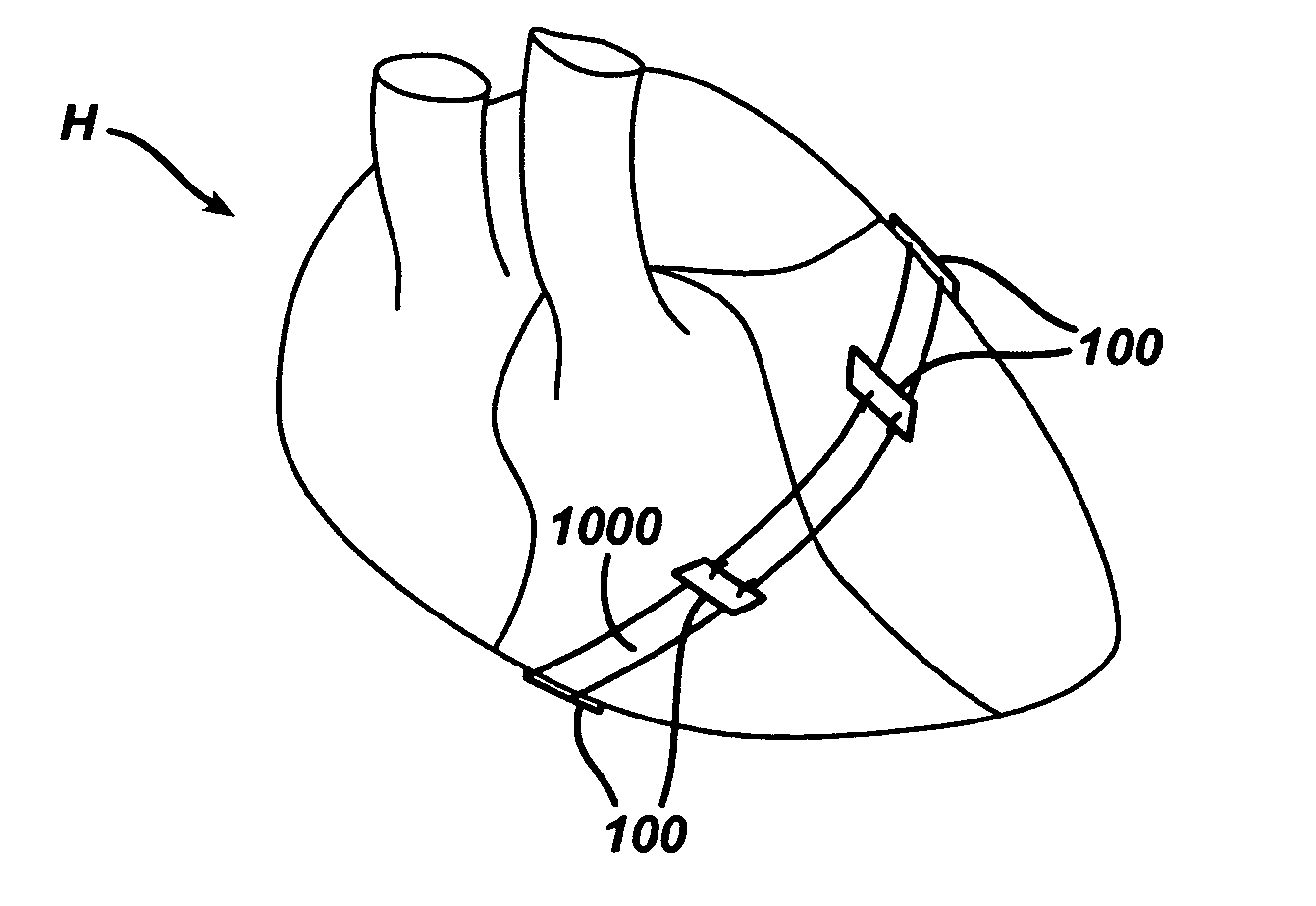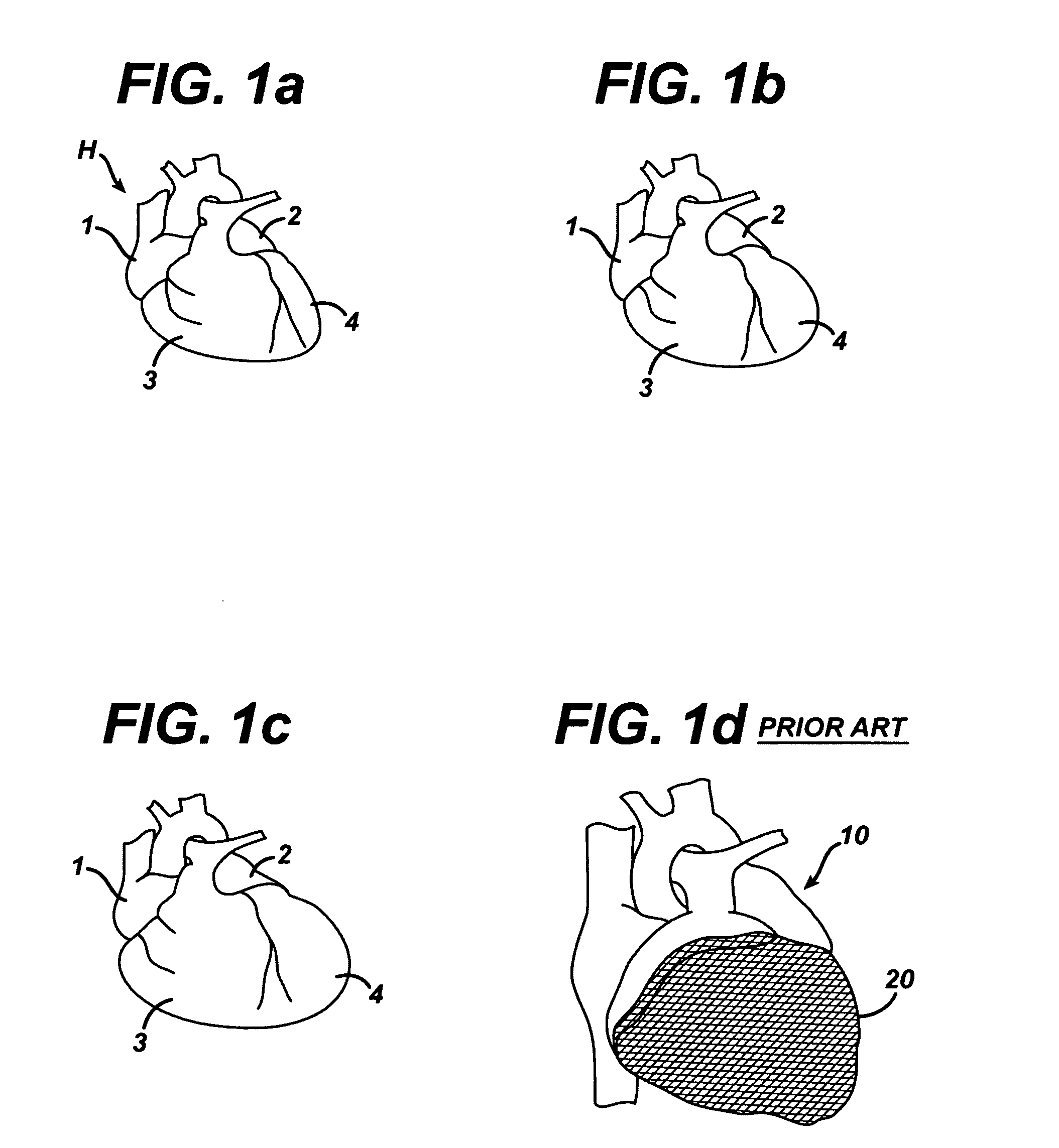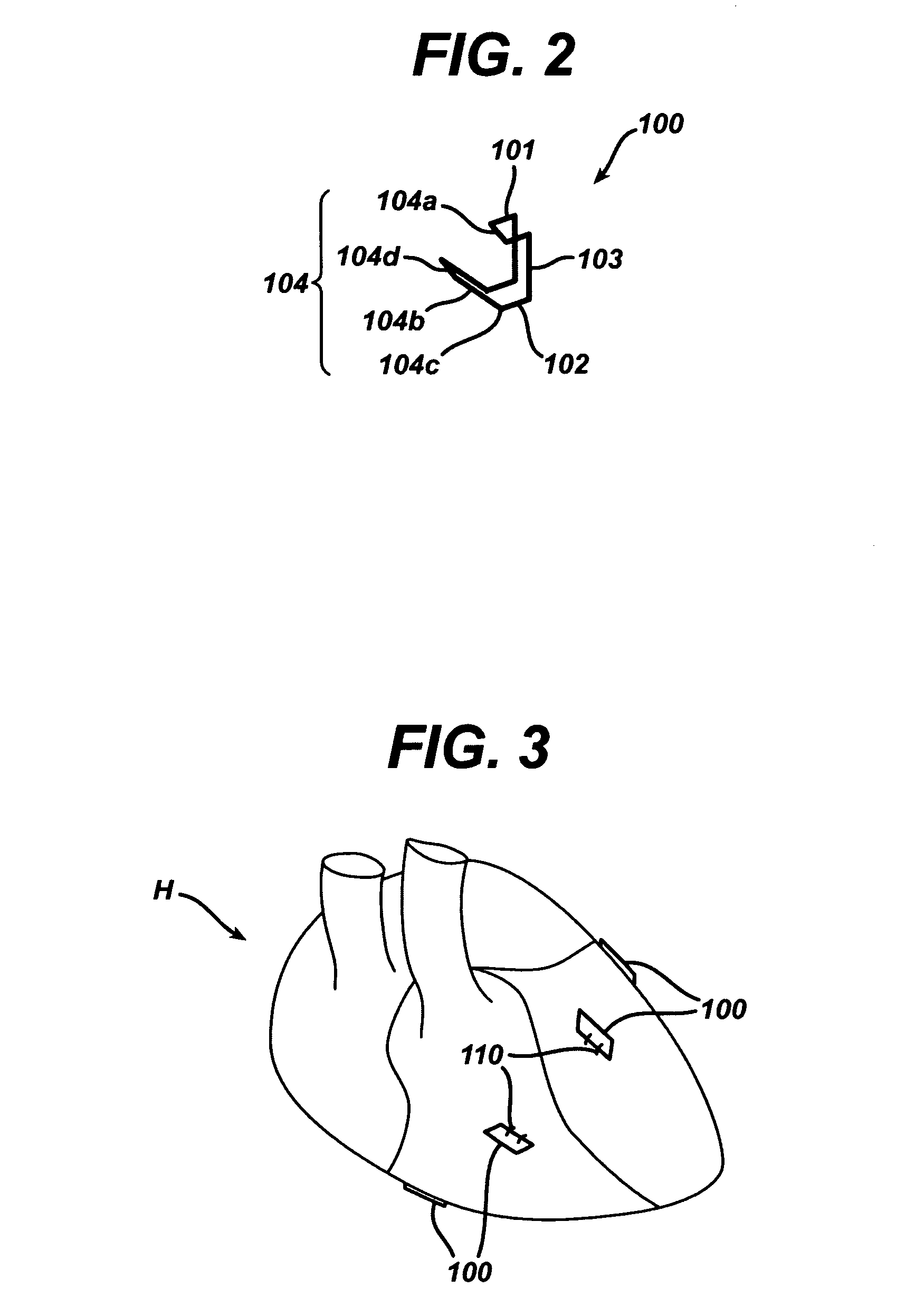Systems and methods for assisting cardiac valve coaptation
- Summary
- Abstract
- Description
- Claims
- Application Information
AI Technical Summary
Benefits of technology
Problems solved by technology
Method used
Image
Examples
Embodiment Construction
[0036]FIGS. 2-4 illustrate anchoring devices 100 according to the systems and methods of the invention. The anchoring devices 100 are placed on and secured to the heart at designated locations. The anchoring devices may be secured to the heart using sutures 110, u-clips, staples, or other securing means known in the art. The anchoring devices are similar to those anchoring devices disclosed in co-pending U.S. patent application Ser. Nos. ______ (Attorney Docket Nos. 17385 and 17386) referenced above.
[0037] As shown most clearly in FIG. 2, each anchoring device 100 is a frame-like member comprised of a top 101, a bottom 102, a back 103, and a front 104. The front 104 is further comprised of a lip 104a, and pivotable flange 104b. The pivotable flange 104b has a hinged end 104c attached to the bottom 102 of the anchoring device, and a free end 104d opposite the hinged end. The pivotable flange 104b engages the lip 104a, when the pivotable flange 104b is rotated about the hinged end 10...
PUM
 Login to View More
Login to View More Abstract
Description
Claims
Application Information
 Login to View More
Login to View More - R&D
- Intellectual Property
- Life Sciences
- Materials
- Tech Scout
- Unparalleled Data Quality
- Higher Quality Content
- 60% Fewer Hallucinations
Browse by: Latest US Patents, China's latest patents, Technical Efficacy Thesaurus, Application Domain, Technology Topic, Popular Technical Reports.
© 2025 PatSnap. All rights reserved.Legal|Privacy policy|Modern Slavery Act Transparency Statement|Sitemap|About US| Contact US: help@patsnap.com



